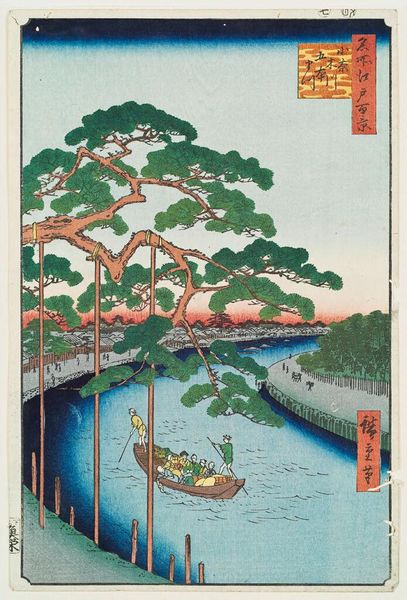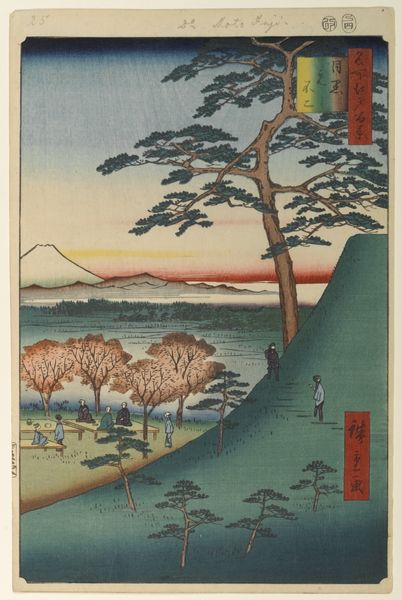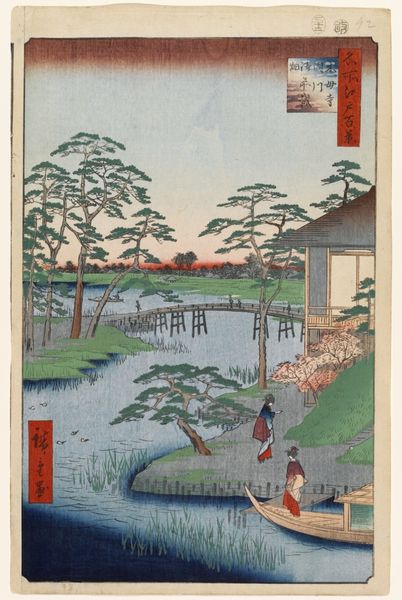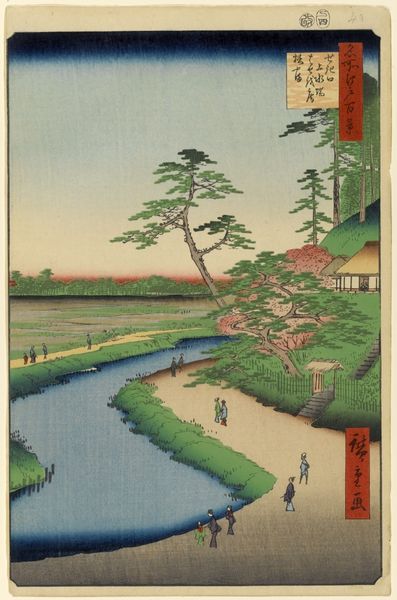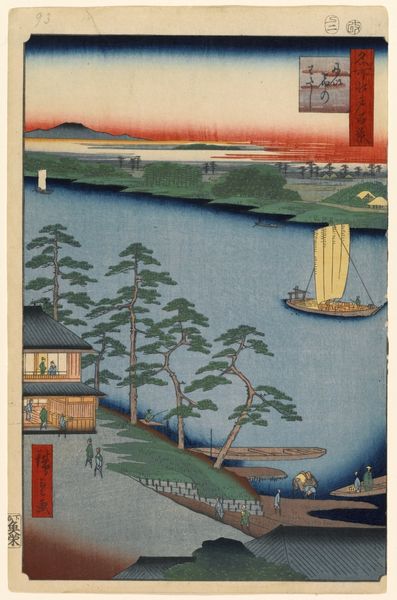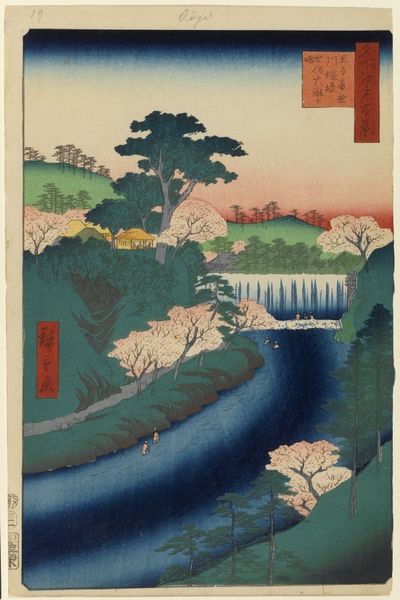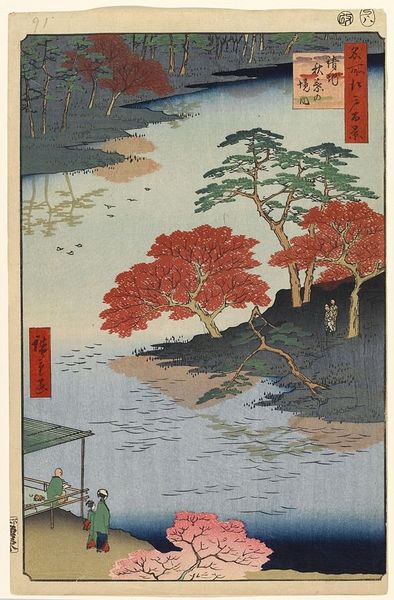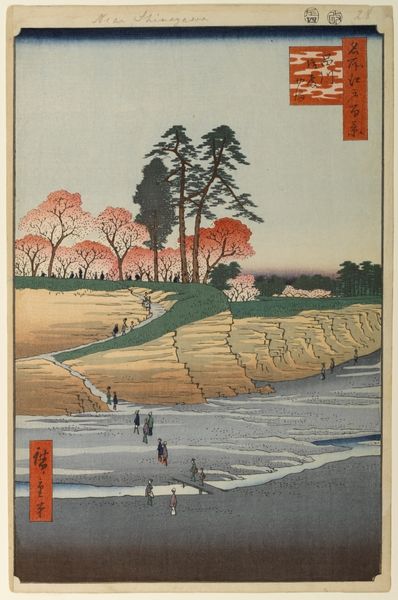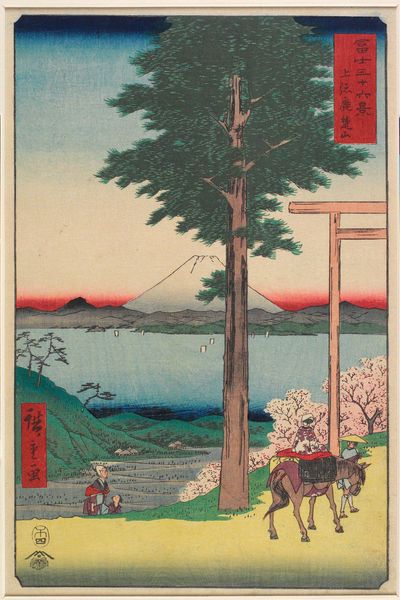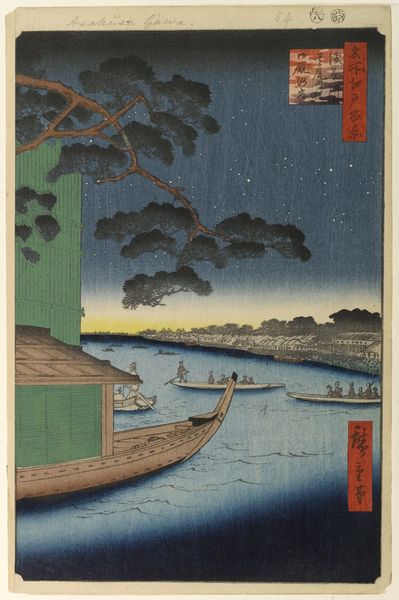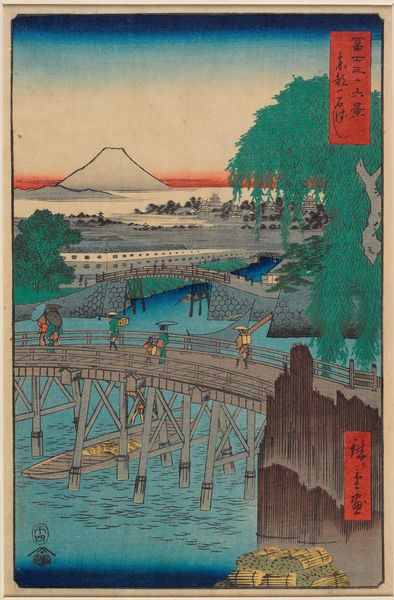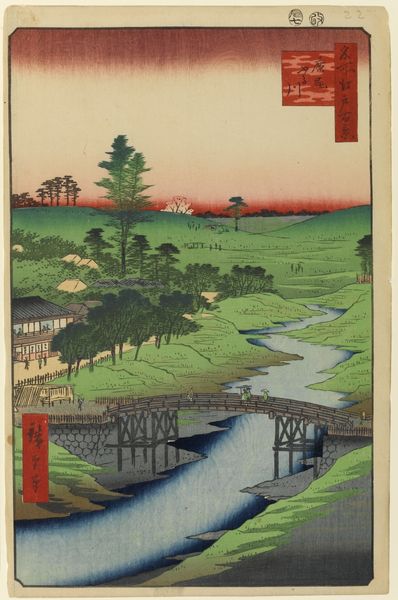
print, woodblock-print
# print
#
asian-art
#
landscape
#
ukiyo-e
#
woodblock-print
#
cityscape
Copyright: Public domain
Editor: Here we have "Five Pines and the Onagi Canal" by Utagawa Hiroshige, created in 1857. It’s a woodblock print, and I'm really struck by the contrast between the dominating presence of the pine tree and the small, almost hurried, figures in the boat below. What can you tell me about this work? Curator: Well, immediately my eye goes to the process of production itself. Look at the intricate carving of the woodblocks. Each line, each shade of color had to be carefully etched. The printmaking tradition itself democratizes art by allowing for multiples to be produced, thus becoming accessible to a larger public, don’t you think? How might the average Edo period citizen have interacted with such a piece? Editor: That's a great point. It's easy to forget the labor involved, especially in an age before mass production. So, instead of just a beautiful scene, you're suggesting we also consider this as an artifact of its time, showing the process and technology of artistic production available? Curator: Precisely. Think about the paper itself - its manufacture, the pigments sourced and ground – and of course, the social conditions allowing artists and artisans to flourish in the first place. These prints are commodities, reflections of and contributors to the economic realities of Edo period Japan. How might tourism on the Onagi canal have shaped this artistic rendering, what was the relationship between commodification of landscapes, cultural tourism, and their impact in visual arts production at the time? Editor: I hadn’t thought of it that way. The scene itself now feels different, less idealized and more connected to its economic context. Curator: Indeed. By considering the means of production and distribution, we gain a much deeper understanding of both the art and the society that created it. We look at how art reflects and shapes material conditions, which is quite compelling! Editor: That gives me a lot to think about – from now on, I'll be sure to look "behind" the image itself, too. Thanks!
Comments
No comments
Be the first to comment and join the conversation on the ultimate creative platform.
